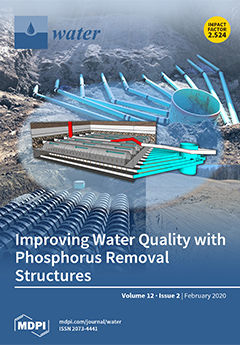Climate change has effects on hydrological change in multiple aspects, particularly in the headwaters of the Yellow River (HWYR), which is widely covered by climate-sensitive frozen ground. In this study, the annual runoff was partitioned into four runoff compositions: winter baseflow, snowmelt runoff,
[...] Read more.
Climate change has effects on hydrological change in multiple aspects, particularly in the headwaters of the Yellow River (HWYR), which is widely covered by climate-sensitive frozen ground. In this study, the annual runoff was partitioned into four runoff compositions: winter baseflow, snowmelt runoff, rainy season runoff, and recession flow. In addition, the effects of global warming, precipitation change, and frozen ground degradation were considered in long-term variation analyses of the runoff compositions. The moving
t-test was employed to detect change points of the hydrometeorological data series from 1961 to 2013, and flow duration curves were used to analyze daily runoff regime change in different periods. It was found that the abrupt change points of cold season runoff, such as recession flow, winter baseflow, and snowmelt runoff, are different from that of the rainy season runoff. The increase in winter baseflow and decrease in snowmelt runoff at the end of 1990s was closely related to global warming. In the 21st century, winter baseflow presented a larger relative increase compared to rainy season runoff. The correlation analyses indicate that winter baseflow and snowmelt runoff are mainly controlled by water-resource-related factors, such as rainy season runoff and the accumulated precipitation in cold season. To analyze the global warming impacts, two runoff coefficients—winter baseflow discharge rate (
Rw) and direct snowmelt runoff coefficients (
Rs)—were proposed, and their correlation with freezing–thawing indices were analyzed. The increase of
Rw is related to the increase in the air temperature thawing index (DDT), but
Rs is mainly controlled by the air temperature freezing index (DDF). Meanwhile, the direct snowmelt runoff coefficient (
Rs) is significantly and positively correlated to DDF and has decreased at a rate of 0.0011/year since 1980. Under global warming, the direct snowmelt runoff (runoff increment between March to May) of the HWYR could decrease continuously in the future due to the decrease of accumulative snow in cold season and frozen ground degradation. This study provides a better understanding of the long-term runoff characteristic changes in the HWYR.
Full article





